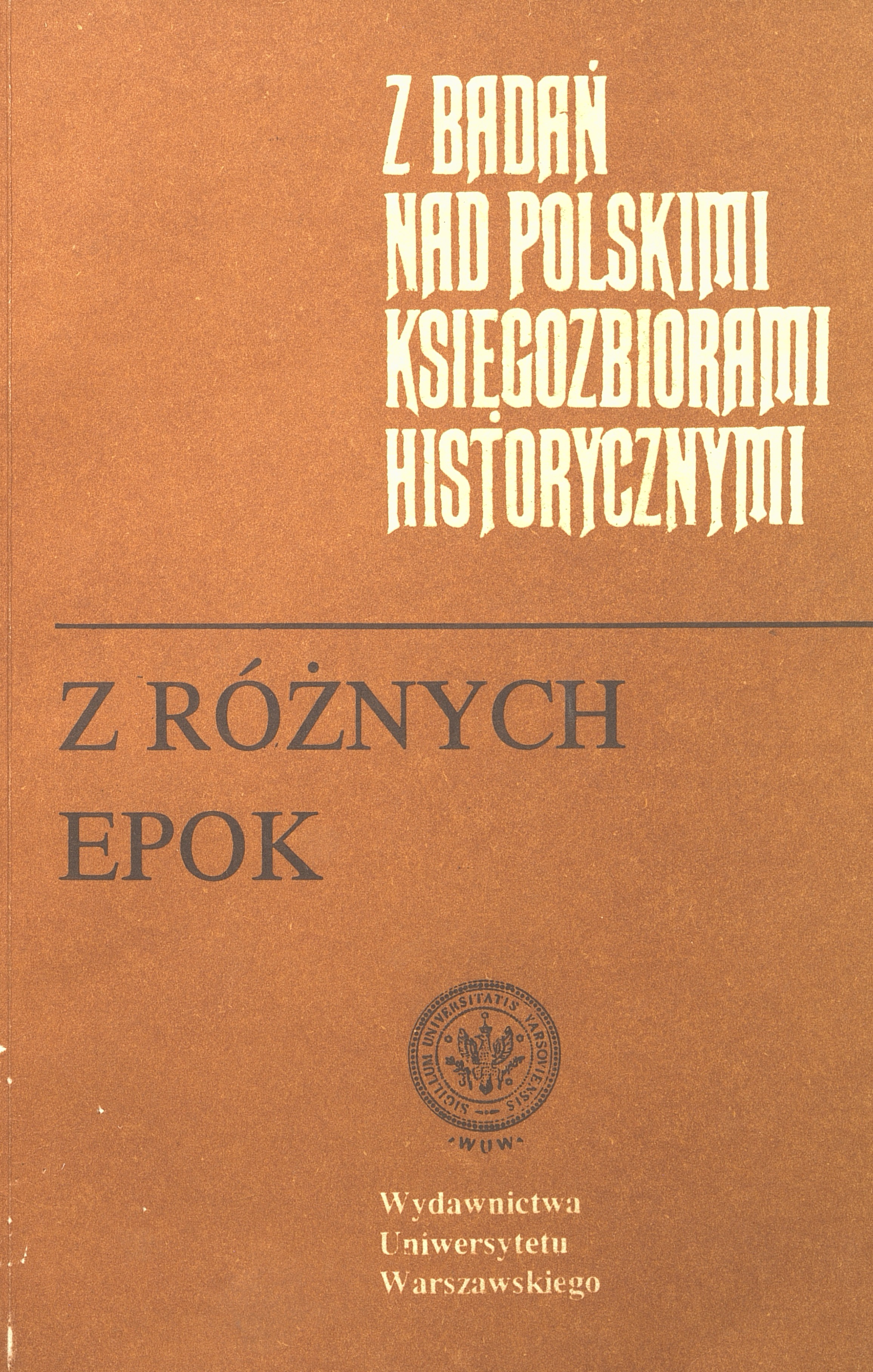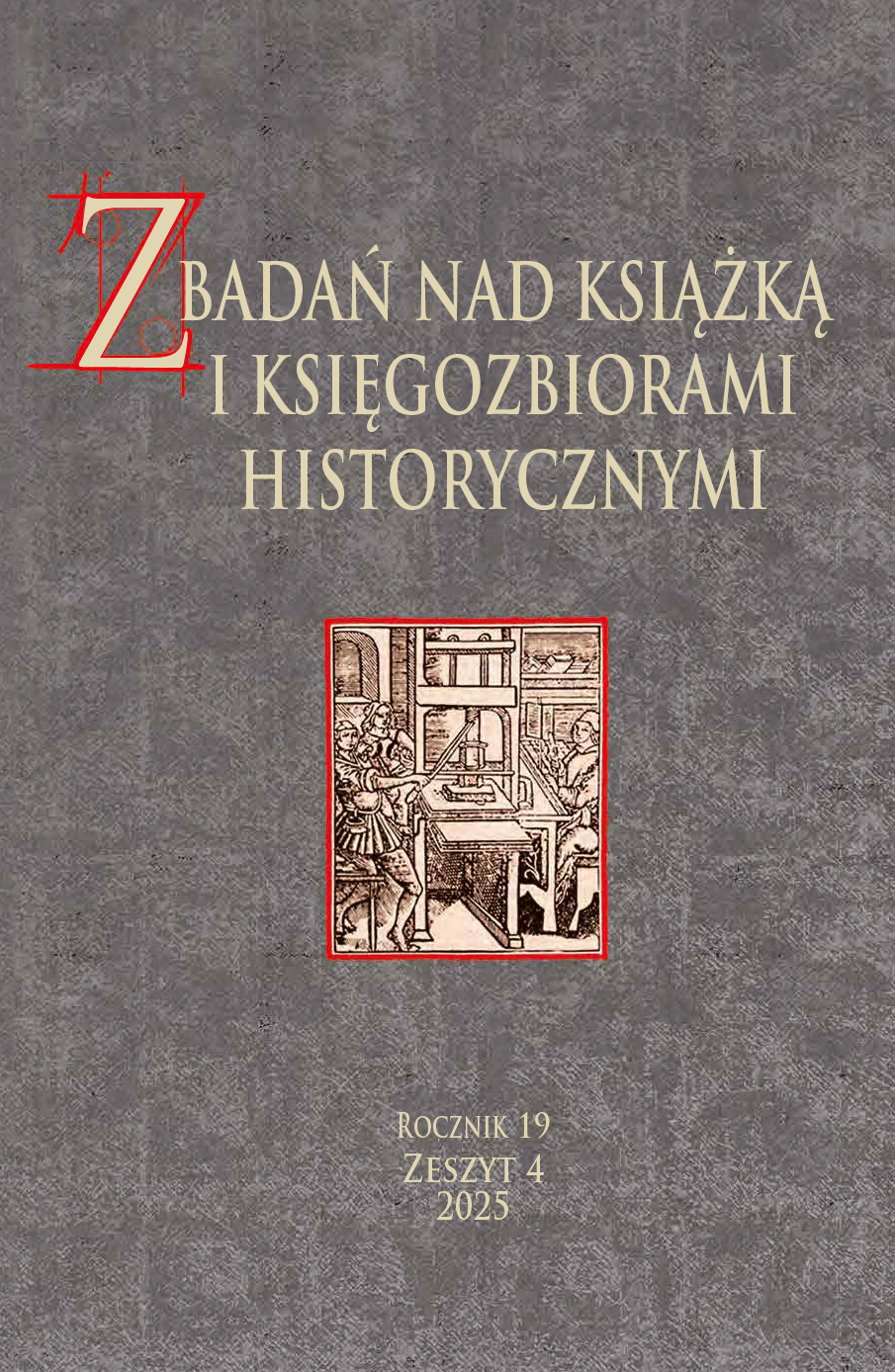The collection of the Pauline manuscripts in Poland
DOI:
https://doi.org/10.33077/uw.25448730.zbkh.1992.423Keywords:
the Paulines, the Order of Saint Paul the First Hermit, monastic collecitons of manuscripts, the Pauline authors, writers, and scribes, the Pauline manuscripts.Abstract
A limited part of manuscripts from Paulíte libraries have been preserved. They can be found only in Jasna Góra convent in Częstochowa and on Skałka in Kraków. The oldest of them with theological issues, mainly biblical commentaries, penitentiary and predicatory treatises as well as ascetic lectures to St. Augustine's Rule. Modest unique specimens are dictionaries and fragments of chronicles. The oldest preserved manuscripts come from the first half of the 15th century and were' copied by Paulites, others were purchsed or brought from other houses of the Convent. From the oldest 120 codes, about 20 Paulite or unknown copyists were identified. The treatises repeated several times are written by Humbert of Romansy, Jakub' of Yoragine, Jan of Szczekno, Mateusz of Kraków, Hieronim of Prague, Andrzej of Kokorzyn, Rajmund of Pennaforty, and others. They concern the setting of Kraków, Wielkopolska, Silesia and Hungary. Among non-theological treatises there is the history of the city of Genoa, the Chronicle of Poland by Wincenty Kadłubek, the life of St. Stanisław the Bishop, and the history of the miraculuous icon in Jasna Góra. In the period of decadent Renaissance in Kraków a fully ornamented missal and the code of rules for Paulite convent were produced. Their authors were probably Wacław Żydek as the copyist and Maciej Ryczyński as the illustrator.
First Paulite predicatory treatises and ascetic lectures concerning the Holy Mass, Lord's Prayer etc. began to appear at the seventies of the 15th century. Their authors were two Paulites: Walenty of Warta and Mikołaj of Wilkowiecko. At the turn of the 16th and the 17th centuries in several convents copying of privileges and legal acts, court acts included, was developed. The first to copy them was Father Szymon Mielecki whose work was continued by Mikołaj Staszewski, Mikołaj Królik, Adrian Bartkowicz, Piotr Lasota and others. They produced a cycle of about 40 copied codes for the whole province of the convent as well as for particular houses and particular problems. Owing to the initiative of Father Staszewski they were assigned the rank of scholarly diplomataries of the convent with the critical evaluation concerning privileges, references to original works and copies, short abstracts and beautiful artistic design. In the same time in which the art of copying works was developing, the Paulites were also developing their seminar studies during which philosophical and theological scripts were put down both by professors themselves as well as by their students. The largest collection of them can be found in both libraries discussed here as well as in the libraries of seminaries in Lublin, Sandomierz, Warszawa and Włocławek. Their supposed number amounts to 300 items. The fall of art of copying manuscripts took place almost simultaneously with the decline of the grandness of the Polish nation. The last works of interest were done by the chronicler of the convent, Father Innocenty Pokorski, who ornamented his works with various illustrations; by Father Antoni Bartoszewicz (+ 1772), and brothers Wojciech and Antoni Dobrzeniewski who were working on ornamenting books in Jasna Góra printing house. Other interesting works can be sporadically found among Jasna Góra manuscripts.







